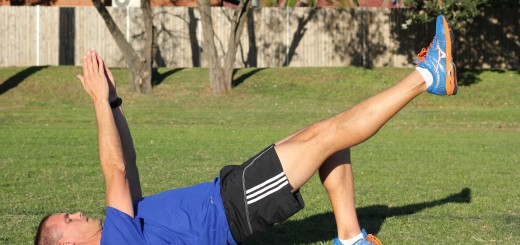
So you have been doing CrossFit for a while now; you are thinking it is time to take it to the next level and build yourself a home gym. Is it right for you? And what equipment do you really need? How much will it cost you? Let’s take a look.
Should I build a home gym?
This is the key question you need to ask yourself. And don’t forget to ask the others in your household, since this potentially impacts them as well – get their buy-in before commandeering a room in the house or half your garage. On the one hand, a home gym sounds like a great idea:
On the days I’m not scheduled to go to my CrossFit gym, however, I’m at a bit of loss as to what to do. … At first, I thought I’d have to re-join a big globo-gym to get access to the equipment I’d need. But then I read this article in the CrossFit Journal explaining how to fully equip one’s home gym for CrossFit. It sounded fun, so I started cramming stuff into our little garage. — (Fitbomb)
But on the other hand, make sure you will actually use it:
Working out on your own isn’t for everybody. Some people would buy this equipment and never use it, because they actually find better motivation in group classes.– (BreakingMuscle.com)
Most people think first about how much money they would save on affiliate gym dues and commuting costs. But you should also spend some time thinking hard about whether you are motivated enough to use that home gym and not just let it accumulate dust.
OK, I am motivated to kick butt and I want to build a home gym. What are the essential items I need?
Start with a well thought-out approach to (1) necessary equipment, and (2) the space that equipment will require in your home gym.
Matthew Hall analyzed mainsite WODs over a period of 18 months for the CrossFit Journal and came to some surprising conclusions about what equipment is truly necessary to do most WODs in your home gym:
Hall’s analysis chart below highlights the frequency distribution of various pieces of equipment used in WODs. Kettlebells and dumbbells, which are typically part of home gym setups, are used in a surprisingly small percentage of WODs, and reasonable substitutes abound for equipment that is infrequently called-for (e.g., running for rowing):
Blair Morrison takes a “less-is-more” approach to home gym building and lays out a series of helpful checklists as to what a home gym does and does not need:
5 things a home gym needs:
- space (see next section)
- a pullup bar (“the quintessential upper body strength builder”)
- a sandbag (“better, more versatile, and costs less” than a barbell)
- barbell and bumpers (“Barbells are necessary if you intend to build real strength. You can only get so far before you have to deadlift and squat to improve.”)
- rubber flooring and a rack (“Without someplace to rack your bar you can’t do heavy squats. If you can’t do heavy squats you can’t get strong. … I’m simply referring to some way to load a secure bar at shoulder height. Portable metal racks, cinder blocks, whatever.”)
5 things a home gym does NOT need:
- a treadmill
- a bench (“It is good for one exercise and otherwise it is always in the way.”)
- plyo boxes (“These things just don’t get used enough to justify the inevitable headache they create. They are space vacuums and shin destroyers.”)
- a platform (“The rubber flooring will serve as your platform if you don’t have the time or space to build a proper wooden one.”)
- medicine balls (“They wind up all over the place—stacked on weights, in corners, or right out in the open—and second, the vast majority of CrossFitters only use them for one exercise—wallball.”)
And don’t forget the ipod or stereo system. You have to rock good tunes while you work out!
Space in a home gym: the final frontier
Once you have spent time thinking about what equipment is absolutely necessary for your home gym WODs, then it is time to think about the space it will require. Blair Morrison lays out the rationale – twice – for this space planning; it is his number one rule when it comes to building a usable home gym:
Without a doubt the biggest problem with most garage gyms is that people over do it. The most vital component to your home gym is that it allows you space to move. That means height, area, and lack of clutter. A clean, simple, efficient box is what you’re looking for, not a room filled with equipment that you imagine you might one day use. Guard free space with your life.
And:
To review: Space is king. Stock your garage gym with things that are used frequently and effectively while taking up as little room as possible. Avoid things that tend to clutter or collect dust from infrequent usage. Do not be duped into thinking you will need a bosu ball. You won’t.
Finally, if you are spatially challenged, the CrossFit message board has a series of good visuals on how to achieve vertical storage in your home gym.
How much is this going to cost?
Prices vary depending on equipment packages and vendors. For the sake of comparison, here are two different home gym equipment packages representing polar opposite ends of the spectrum – the “Premium CrossFit package” and the “I’m Broke” package:
| $689 | Pendlay (210lbs total) & HD Bar |
| $399 | Pendlay Combo squat stand/pullup rack |
| $59 | Muscle Driver USA gymnastic rings |
| $79.99 | 10lb Rage Ball |
| $63.99 | 53lb Gray Series V2 Kettlebell |
| $37.99 | Rogue HG Collars |
| $9.99 | MuscleDriver Cable Speed Jump Rope |
| $1,339 | Total |
Rogue and other vendors sell similarly priced packages, so it pays to shop around, especially if you do not need all the equipment and want to select items a la carte.On the other end of the spectrum, if cash is tight but you still want to hit CrossFit WODs at home, consider the $300 home gym package that Coach Burgener outlines in this video:
- 3 PVC pipes: one regular, one filled with sand, one filled with rebar
- a doorway pullup bar
- a 45 lb. barbell and a training bar
- set of plates the same diameter as the barbell
- set of rings
- homemade squat racks with cement and 2×4’s
As Coach Burgener says, this setup will enable you to do all the basic workouts: squats, pulls, presses, Olympic weightlifting, chin ups and dips (running, burpees and lunges are easily tacked on to any workout).
The cheapest you could go? Consider a home gym equipment package option along these lines:
| $70 | metal plates and a barbell on Craigslist |
| $20 | Used dumbbells |
| $10 | Cheap jump rope. You need to warm up and practice double unders, and a C2 Rower is out of the question. |
| $0 | Assuming you have a chair/stump/stack of something stable, you now have box jumps |
| $20 | build your own pull up bar. There are hundreds of youtube videos and articles online. |
| $20 | buy a military military duffle bag (15$) and stuff it with anything you have, or rubber mulch from Home Depot ($5) |
| $10 | Homemade PVC gymnastic rings |
| ~$150 | Total |
Home gyms can get pricey quickly, so it is good to review where we started this discussion – think hard about what equipment you really need to get going. And if you want some equipment at a lower cost, FitBomb has compiled a nice list of DIY equipment resources and the CrossFit discussion boards are full of resources detailing how to make lots of your own equipment.
Putting Your Home Gym Together: Video Demos
Rogue Fitness shows you how to take an empty garage and turn it into a home gym in this video. They provide a list of the tools you will need for dealing with wood and concrete installations, and focus on the order of the series of steps to get started. If you build it right, maybe Mikko Salo will come to test-drive your home gym as well!
Pat Sherwood walks you through his garage gym in Denver, complete with a plyo box signed by numerous CrossFit coaches and trainers. Note the “life size picture” of Chris Spealler on the box.
In this video, Dan Bailey takes us back to old-school workouts in his parent’s garage gym, complete with divots in the backyard where he dropped weights and kettlebells; a homemade wooden pullup bar nailed between two trees; the wooden stoop where he practiced box jumps; and the 50 lb. sand-filled mini spare tires he used with a barbell until he got bumper plates.
Tabata Tidbits: A Few More Tips…
When it comes time to buy equipment, check out this huge compendium of different pieces of equipment with links to reviews put together by CrossFit SoCal. SealGrinder also has reviews of lots of equipment for a home gym.Once you have a home gym in place, you have to know how to take care of it, right? Blair Morrison takes aim at a list of things that should be kept in and out of your home gym:
5 things that should be kept in your home gym:
- a clock
- tape
- chalk
- a fan
- a foam roller
5 things that should be kept out of your home gym:
- liquid (“It’s okay to have chalk and bumper grease all over the place down there because that’s what the space is for. Introduce other substances and you have a recipe for hybridized stains and ants. And you DON’T want ants.”)
- pets (“Nothing worse than sucking wind during a workout and having a few stray fur feathers waft into your mouth.”)
- spectators
- television
- laundry (“I’ve seen a lot of garages littered with stray t-shirts, shoes, even socks, and it’s disgusting.”)
Finally, if you haven’t laid the groundwork yet, spend a few minutes reading up on how to convince your wife that you need to build your CrossFit garage gym. It could be the most important five minutes you spend in the whole process!
Original Article by: JOEL TOLEDANO at TabataTimes






